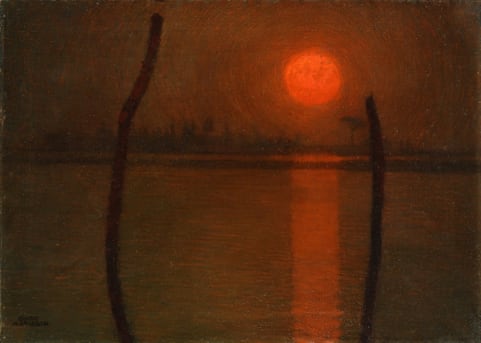Walther Gasch
Evening atmosphere on the Tyrrhenian Sea, 1927
![Guido MARUSSIG, Alba di luna su l'Estuario [Moonrise on the Estuary], 1920](https://artlogic-res.cloudinary.com/w_1600,h_1600,c_limit,f_auto,fl_lossy,q_auto/ws-artlogicwebsite0395/usr/images/artworks/main_image/items/26/26a97e03ff86409baae185bf8e2dcce6/marussig-rosso.jpg)
1920, Milan, Galleria Pesaro
V. Pica, Mostre individuali. V. Zanetti-Zilla, G. Marussig, B. Disertori, V. Zecchin, exhibition catalogue, Galleria Pesaro, Milan 1920, p.13, no. 44
V. Strukelj, G. Sgubbi, edited by, Guido Marussig. Il mestiere delle arti, exhibition catalogue, Trieste 2004, p. 172
Reference bibliography: E. Prete, s.v. Guido Marussig, in La pittura nel Veneto. Il Novecento. Dizionario degli artisti, edited by N. Stringa, Milan 2009, p. 278

Fig. 1
Tramonto [Sunset], 1907, Collezione Daniela Balzaretti
Subscribe to our newsletter to receive all the news about exhibitions, fairs and new acquisitions!